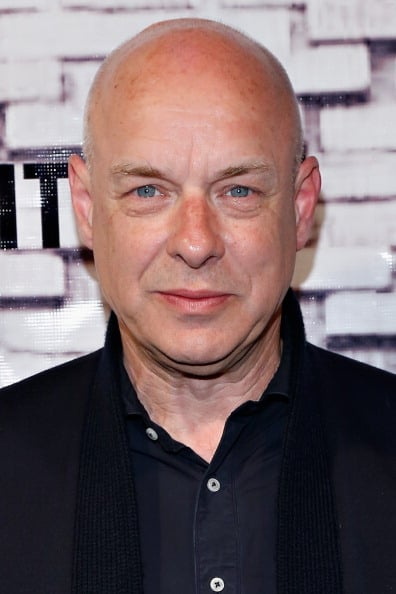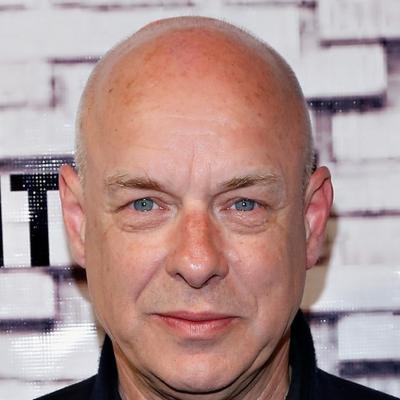Brian Eno at a Glance
Brian Eno Net Worth: A Deep Dive into the Life and Career of the Ambient Music Pioneer
Brian Eno, a name synonymous with innovation in music, art, and technology, has cultivated a career that spans decades and genres. His pioneering work in ambient music and electronica has not only shaped the soundscape of modern music but has also influenced a wide array of other creative fields. This article delves into Brian Eno’s life, exploring his diverse artistic endeavors, significant collaborations, and the estimated net worth that reflects his lasting impact.
Early Life and Education
Born Brian Peter George St John le Baptiste de la Salle Eno on May 15, 1948, in Melton, Suffolk, England, Brian Eno’s journey began with a strong educational foundation. He attended St Joseph’s College in Ipswich before pursuing his artistic interests at the Ipswich School of Art. It was here that he met Tom Phillips, an artist and teacher who would significantly influence his creative development. Eno then further honed his artistic skills at the Winchester School of Art, graduating in 1969. During his education, Eno experimented with tape recorders as musical instruments and formed the avant-garde performance group, the Merchant Taylor’s Simultaneous Cabinet. These early experiences laid the groundwork for his future explorations in sound and performance.
Career Beginnings: From Avant-Garde to Roxy Music
Eno’s professional music career took off after he moved to London in 1969. He became involved with the Scratch Orchestra and the Portsmouth Sinfonia, immersing himself in the burgeoning experimental music scene. To support himself, he worked odd jobs including as an assistant in advertising and as an electronics dealer. A pivotal moment arrived in 1971 when he joined Roxy Music, a band that would catapult him into the spotlight. As a founding member, he contributed to the group’s first two albums, “Roxy Music” and “For Your Pleasure.” His innovative use of synthesizers and unconventional soundscapes became integral to the band’s signature style. However, in 1973, Eno departed from Roxy Music to embark on a solo career, paving the way for his exploration of ambient and experimental music.
Ambient Music Pioneer
Brian Eno’s most significant contribution to music is undoubtedly his pioneering work in ambient music. In the mid-1970s, he began to define and explore this genre, which he described as music designed to modulate and reconfigure the listener’s perception of their environment. His first ambient album, “Discreet Music,” released in 1975, marked a turning point in the history of music. It was followed by the iconic “Ambient” series, which included “Music for Airports,” “The Plateaux of Mirror,” “Day of Radiance,” and “On Land.” These albums, characterized by their atmospheric textures, minimalist compositions, and emphasis on creating a mood, revolutionized the way music was experienced and used. His work in this genre has had a profound impact on electronic music, film scores, and various forms of art installations.
Beyond the “Ambient” series, Eno has released a vast catalog of solo albums that showcase his versatility and experimental approach. Some notable examples include:
- “Apollo: Atmospheres and Soundtracks”
- “Nerve Net”
- “The Shutov Assembly”
- “I Dormienti”
- “Lightness: Music for the Marble Palace”
- “Music for Civic Recovery Centre”
- “Another Day on Earth”
- “Small Craft on a Milk Sea”
- “Lux”
- “Reflection”

Cindy Ord/Getty Images
Music Collaborations
Throughout his career, Brian Eno has been renowned for his collaborations with a wide range of artists, contributing to a diverse and influential body of work. In the 1970s, he teamed up with guitarist Robert Fripp on the albums “(No Pussyfooting)” and “Evening Star,” showcasing a blend of experimental guitar textures and ambient soundscapes. The 1980s saw Eno’s successful partnership with David Byrne, the frontman of Talking Heads. Together, they released critically acclaimed albums such as “My Life in the Bush of Ghosts” and “Everything That Happens Will Happen Today.” These collaborations exemplified Eno’s ability to blend his unique approach to music with the styles of other artists.
Eno’s collaborative spirit has led to partnerships with numerous other musicians and artists, including:
- Rachid Taha
- Damon Albarn
- Karl Hyde
- The Gift
- Kevin Shields
- David Bowie
- Nico
- Genesis
- His brother, Roger Eno
These diverse collaborations demonstrate Eno’s adaptability and his ability to work across genres and with a wide range of artists, further enriching his already impressive discography.
Record Producer
Besides his work as a solo artist and collaborator, Brian Eno has made a significant impact as a record producer. Since the 1970s, he has produced numerous albums for popular artists, shaping their sounds and helping them to achieve commercial and critical success. His production work has been highly sought after and he has worked with notable acts, including:
- U2
- Talking Heads
- Ultravox
- James
- John Cale
- Laurie Anderson
- Coldplay
Through his production work, Eno has not only contributed to the success of these artists but has also influenced the sound of popular music, solidifying his legacy as one of the most influential figures in the industry.
Other Media Ventures
Brian Eno’s creative endeavors extend beyond music into other media, including video, art installations, and technology. His video works have been exhibited around the world, often incorporating generative visuals and experimental techniques. One of his most famous projects is “77 Million Paintings,” a program that generates unique visual compositions, exploring the intersection of art and technology. Eno has also created numerous installations that combine sound, light, and artwork, creating immersive, multi-sensory experiences. In 2009, he curated the Luminous Festival at the Sydney Opera House, further showcasing his ability to curate and shape large-scale artistic events.
Eno’s contributions to technology are also noteworthy. He created the six-second start-up sound for the Windows 95 operating system, a sound that became instantly recognizable to millions of users worldwide. In 2006, he composed exclusive sounds and ringtones for the Nokia 8800 Sirocco Edition cellphone, further demonstrating his versatility and his ability to create innovative sounds for various platforms.
Personal Life and Humanitarian Efforts
Brian Eno’s personal life includes his marriages and family. In 1967, at the age of 18, he married Sarah Grenville. They had a daughter, Hannah, before their divorce. In 1988, he married his manager, Anthea Norman-Taylor, with whom he has two daughters, Irial and Darla. Beyond his artistic endeavors, Eno has been involved in a number of humanitarian causes. In 1996, he co-founded the Long Now Foundation, which uses the arts and other disciplines to promote long-term thinking and responsible action for a better future. In the aftermath of the war in Bosnia, Eno worked with traumatized youth, leading music therapy projects in collaboration with Edinburgh University professor Nigel Osborne and the organization War Child. These efforts highlight his commitment to using his influence and skills for positive change.
/**/
Brian Eno Net Worth: Final Thoughts
While the precise fluctuations in Brian Eno’s net worth can vary, estimates place it at around $60 million. This figure reflects his extraordinary career, encompassing groundbreaking contributions to ambient music, collaborations with iconic artists, successful record production, and ventures in other media. His continuous exploration of sound, art, and technology ensures his ongoing influence and enduring legacy.

